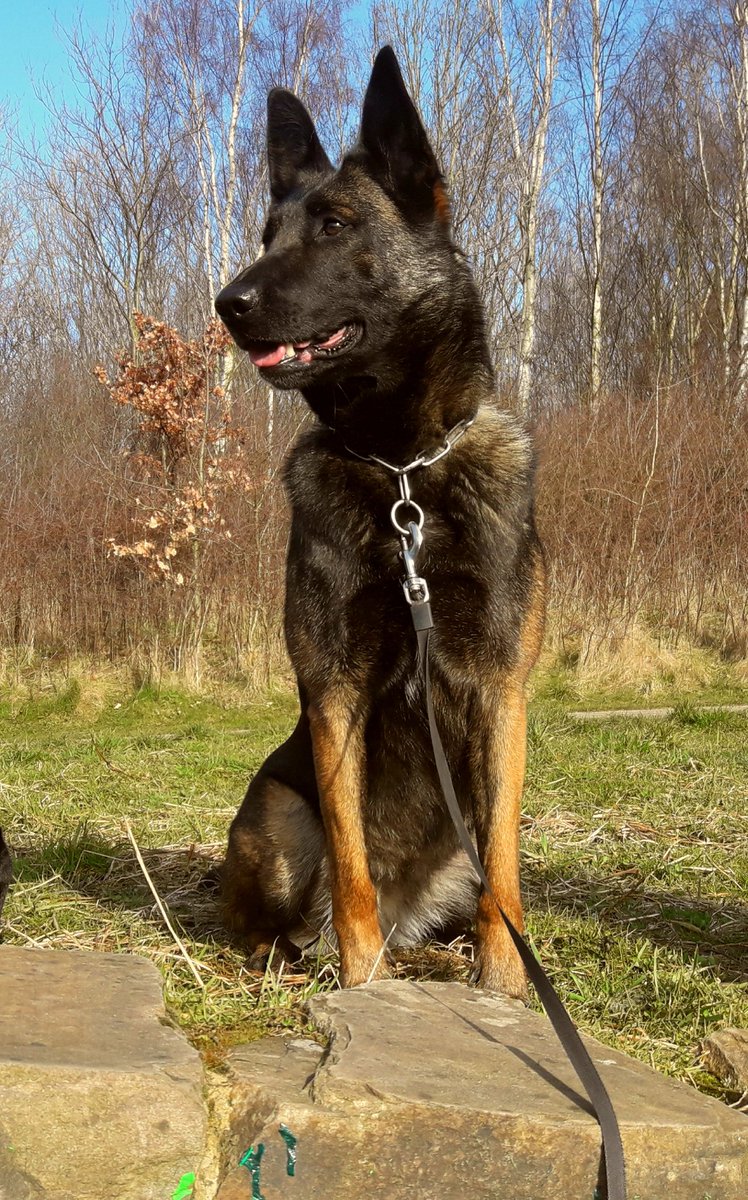Believe In Your dog Breeds V Skills But Never Stop Improving

Presented here down the page you will find a bunch of helpful additional info in relation to Dogs.
Some Advice For Dog Owners And Buyers.
Aren't puppies adorable? They are fun and adorable, but that's not all. Sooner or later your adorable puppy will grow into a dog. He will still be adorable, but he will need you to make sure that he is living a healthy lifestyle. Here are some tips to make sure that you can have a happy, healthy canine.

There are many pleasures derived from dog ownership, but it is also a serious financial commitment. Food, supplies and vet bills can add up to $1,000 or more per year. Pet health insurance can help; although you will pay a monthly or yearly fee, you will often be covered if a big medical emergency occurs for your pet.
Get your dog neutered. Research has shown that by doing this you can be sure your pet can have a longer life and not be at risk for things like cancer. In addition, dogs that are spayed or neutered do not have as strong of a desire to wander from their home, meaning that they are less likely to get lost or hit by a car.
Let your lifestyle determine what breed of dog you should bring into your home. For instance, if you like to go running, you're not going to want a little dog that can't keep up with you. Likewise if you spend quite a lot of time at home you may want to get a dog that likes to be pampered a lot. Finding a dog that matches your personality will make both of you happy.
Unless you're okay with your dog playing with your shoes and other things around your home, buy him some toys. He will enjoy having things of his own, particularly if they are interactive like pull-toys you can use together. Also buy him things he can use to occupy himself and stay out of trouble!
Take your grown dog to the vet at least once a year. The vet will check to see if the dog's vaccines up to date. In addition, the vet will check the dog's teeth and vital signs. If any major health or behavioral issues come up between annual checkups, you should see the vet earlier.
If your dog has been playing outside, take the time to inspect its ears and neck for ticks. These parasites are very common and could make your dog sick if you do not take action right away. Take your dog to the vet if you do not know how to remove the ticks yourself.
Be sure to praise your dog freely and consistently whenever he exhibits a desired behavior. Always make sure your dog knows when they perform a behavior you wish to see repeated. It also teaches your dog that when he does the things you want, he will get praised.

Be consistent when giving your dog commands. This is an area where a lot of dog owners have a problem, especially when you won't feed your dog from the table but your spouse will. Make sure that everyone in your home understands what's acceptable so that the dog will receive a clear message. That will make him more likely to obey.
When choosing a dog for your home, don't forget to estimate the size it will be as a full grown adult. This is especially true if you have small children at home. Although dog breeds starting with v will be cute, it may grow into a large, one hundred pound dog. Do some research on the average adult size of the breeds you are considering.
Get creative with your dog's ongoing training. For example, teach him commands in other languages or show him how to do something that will really impress everyone he meets. He will love showing off to people and the extra learning will create a more well-behaved animal who is happier with himself.
When you are walking your dog in the wintertime, there may be rock salt or chemical ice melters that come in contact with his feet. Once you get back in the house, wash his paws and dry them gently. This will prevent these items from causing any type of infections.
Before you head out for a day of fun in the sun with your dog, dab a little sunblock on him! Dogs can get very serious burns on their noses and the inside of their ears, so include him in your sun-protection regimen. Just make sure there's no zinc or PABA in the product you use.
If your dog seems to have a bad reaction from every shampoo you use on him, try a green product. Most commercial brands of dog shampoo contain a lot of things like phosphates and sulfates, which can irritate your dog's skin. They are also harmful to the environment so you'll be solving two problems at once.
Make sure that you spend adequate time on each thing that you try to teach your dog. Even though your dog might catch on to something, for example the "sit" command, it may not be mastered. You'll want to make sure that the command is done every time that you ask no matter what situation you are in before you move onto a new command.
You should not let your dog go outside without supervision. It is best to provide your dog with a safe space such as a fenced yard. Inspect your fence to make sure your dog cannot escape. If you do not have a fence, always go outside with your dog so you can keep an eye on it.
You should not let your dog go outside without supervision. It is best to provide your dog with a safe space such as a fenced yard. Inspect your fence to make sure your dog cannot escape. If you do not have a fence, always go outside with your dog so you can keep an eye on it.
Crate training a puppy is a good idea if you're going to be gone all day and will have nobody there to watch your pet for you. This can help prevent damage to your home and unwanted urine or feces inside.
Getting a dog is like adding a new member to your family. It's important to have the right advice and knowledge to keep your dog energetic and happy. Hopefully what you learned today offered some valuable insights on how to properly care for your furry companion.
Best Advice for Dogs with Skin Issues
I still need to publish a real post about Mr. Stix's full backstory, but this feels more pressing. For nearly 18 months, Mr. Stix's permanent nakey spot (from unknown injuries before he was rescued, including 15 fractures and this big patch of coat missing) has featured several inflamed, peeling areas. Initially I tried to fix it myself at home with things like aloe vera, vaseline, a veterinary ointment called animax that the shelter had give us while we fostered him most of 2019, etc. It's sort of a combination of steroids, antibacterial, and antifungal stuff. I took him to see our main veterinarian in spring 2020, when there was a 2-month wait to get into see a board-certified veterinary dermatologist. It has been quite a journey since then, and it's nowhere near over. Here's my best advice for dogs with skin issues.
Before I tell the ongoing saga with Mr. Stix's skin. Here is my best advice for dogs with skin problems.
See a board-certified veterinary dermatologist as soon as you can. Yes, your main veterinarian can probably help, but it's honestly best to go right to the top experts.
Agree to whatever skin scrapings / cytology the veterinary dermatologist recommends. This provides information about what types of secondary infections currently grow on your dog's damaged skin.
Do NOT assume every skin issue is allergies. It often is some sort of allergic process, but NOT always and assuming so (and acting accordingly may only delay real solutions and subject your dog to all kinds of quack advice and home remedies).
Buy the best quality fish oil and Vitamin E supplements you can afford, if it's recommended for your particular case of a dog with skin issues.
When necessary, agree to the skin biopsies (yes, like minor surgery) and have them reviewed by a veterinary pathologist that specializes in dogs with skin issues. The one we used is at Texas A&M.
Follow your veterinary dermatologist's advice and plans, and keep the faith. These dogs with skin problems often don't improve quickly. (I need to take my own advise. See below.)
Mr. Stix's Story as a Dog with Skin Problems
This is what Mr. Stix's nakey spot looks like when it's normal. Photo from May 2019 soon after his hip surgery. The bald patch is permanent. That's not the issue.
This is how bad the red / peeling areas got in mid-2020 when we saw our main veterinarian, who added a low-dose of oral Vitamin E and some topical too and told me to keep using the animax.
This is how it looked when Mr. Stix first saw the board-certified veterinary dermatologist in early August 2020, but the specialist had me STOP the animax and instead use a prescription anti-bacterial ointment (mupirocin) ... as well as add a better quality oral fish oil and continue both topical and oral Vitamin E (but at a higher dose twice a day). We knew from the skin scrapings / cytology they did onsite that Mr. Stix had a bacterial infection.
But, without the daily topical steroids (which long term are a bad idea), Mr. Stix's skin got much, much worse -- even breaking open and scabbing over.
Our veterinary dermatologist had recommended doing the skin biopsies right away in August 2020, and I *almost agreed to it then, but I was VERY worried about the cuts resulting in skin that would NOT heal. And, I figured it was at least worth a try to use the prescription antibiotic ointment and other supplements and stuff.
But, by around Thanksgiving, it was clear we had to do the biopsy. That photo is kind of gruesome, so you can see it here, if you want. I wish I had done the biopsy sooner. I feel like I wasted time from August through November.
Post-Biopsy Diagnosis
As I expected, despite all the know-it-alls trying to tell me it was an allergic issue, it turns out that Mr. Stix instead has an autoimmune condition called erythema multiforme. They believe it was triggered by the trauma of his earlier injuries. They don't think it is life-threatening. They don't think it will spread to other areas of his skin. Just the already damaged, permanent nakey spot.
With that information in hand, we updated the treatment plan to include a topical, non-steroidal anti-inflammatory ointment (tacrolimus -- often pricey, but we used a Good RX coupon at Costco to get the cost down). They use a version of this medication orally for people who have had various kinds of transplants. It's the smallest / safest option for treatment, and that's where we started.
I was so hopeful it would work at the once-daily application, but the skin still didn't heal completely.
So, in early 2021, we started applying it twice daily on the advice of our veterinary dermatologist.
But, it still hasn't healed completely. It often improves a lot and then comes roaring back, so we had another appointment to see the specialist last week. We had to try something new.
Enter the Big Immune-Suppressing Drug
Despite my concerns and form of veterinary PTSD about major immune suppression drugs (after our experiences with Lilly), I agreed last week to add oral cyclosporine, which is also a drug that people get after various transplants. Mr. Stix would need to take it daily for life.
It smells like it's made from skunk butts, so each gel-cap pill is individually packaged, and you keep them in the freezer because that can help with nausea it can cause (since it's recommended you give on an empty stomach).
I found some good info on this med, and our veterinary dermatologist assured me that it has been safely used in veterinary medicine for like 20+ years, etc.
The med only comes in doses of 25 mg, 50 mg, and 100 mg, and at his size Mr. Stix's ideal dose is around 88 mg once a day. So we went with 75 mg (25+50) to err on the lower side.
It takes like 3-7 days for the med to build up in the blood to therapeutic levels, but it takes more like 4-6 weeks to know if it's going to help the skin (or not).
We made it to day 4, then the barfing started.
Anxiety
I wish I could say that this is all going to be fine, but I just don't know. I feel like I just have to accept that the skin will never fully heal, even though seeing his raw spots up close while applying the topical med twice a day and topical Vitamin E once a day causes me so much angst and anxiety.
I supposed to check in with our veterinary dermatology team next week to confirm that Mr. Stix's weirdness and apparent suffering has improved.
It took a lot of convincing to get Mr. Champion of My Heart to agree to try the cyclosporine, so even if the specialist comes back and recommends maybe a lower dose, I doubt we'll want to risk it ... because Mr. Stix sure seemed to be having some neurologist issues to me, and after the Lilly situation, I just cannot do that again.
He is only 3 years old. I don't want to make anything worse. It honestly felt like I'd poisoned him.
The good news is that most of the time his skin doesn't seem to hurt or itch or anything -- though I do have pain meds, if he needs them. It mostly just looks bad, and he has to wear a no-lick collar for about 20 minutes after I apply his meds so that he doesn't lick it off.
His nakey spot is prone to sunburn anyway, and the topical tacrolimus increases the risk of burning, so I used his earlier sun-reflecting coat (which started to look ragged) as a pattern and sewed him a new / light sun protection coat. He looks very cute in it.
https://championofmyheart.com/2021/08/05/dogs-with-skin-issues/
As a devoted person who reads on Pets, I assumed sharing that piece of content was beneficial. Do you know about another person who is sincerely interested in the topic? Why not promote it. Thank you for being here. Kindly come by our website back soon.
